The Cards: Explained
Pokémon:
Slowking
Refer to the introduction
Pidgeot
The Partner Battles rules state that Colorless Pokémon may be inserted into any deck. This is extremely abuseable with Slowking. The main partner to pair with Slowking is both of the Quick Search Pidgeot. By committing 8 deck slots to 3-1-2 Pidgeot line as well as a Rare Candy and Pokémon Breeder, Slowking can become an incredibly consistent deck turn in and turn out.
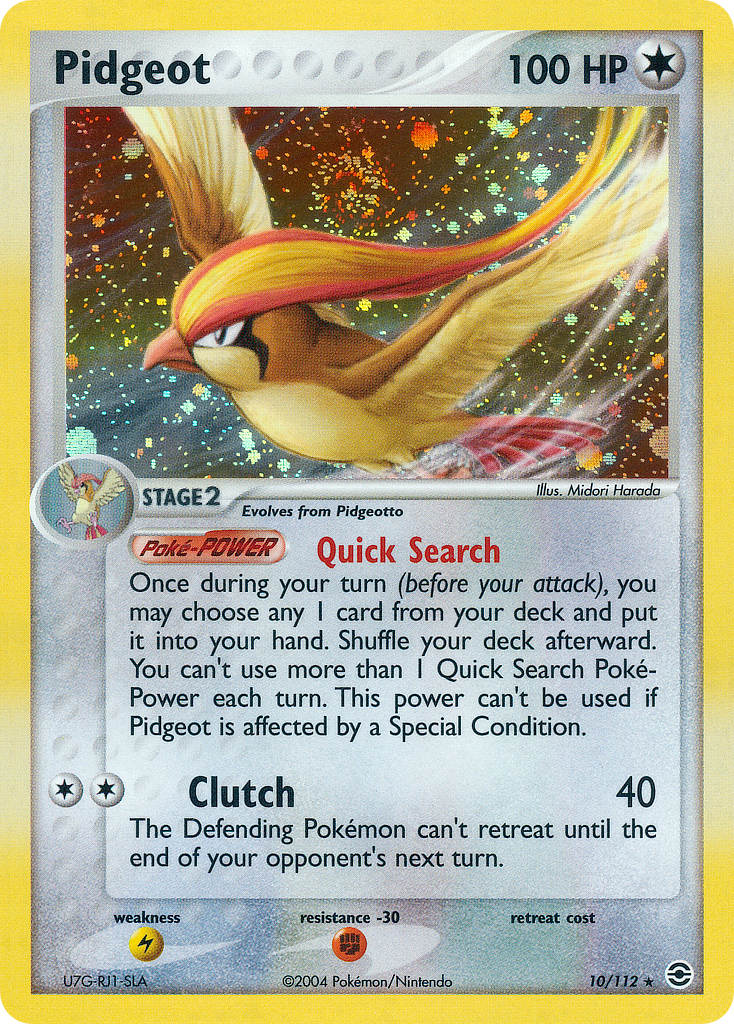
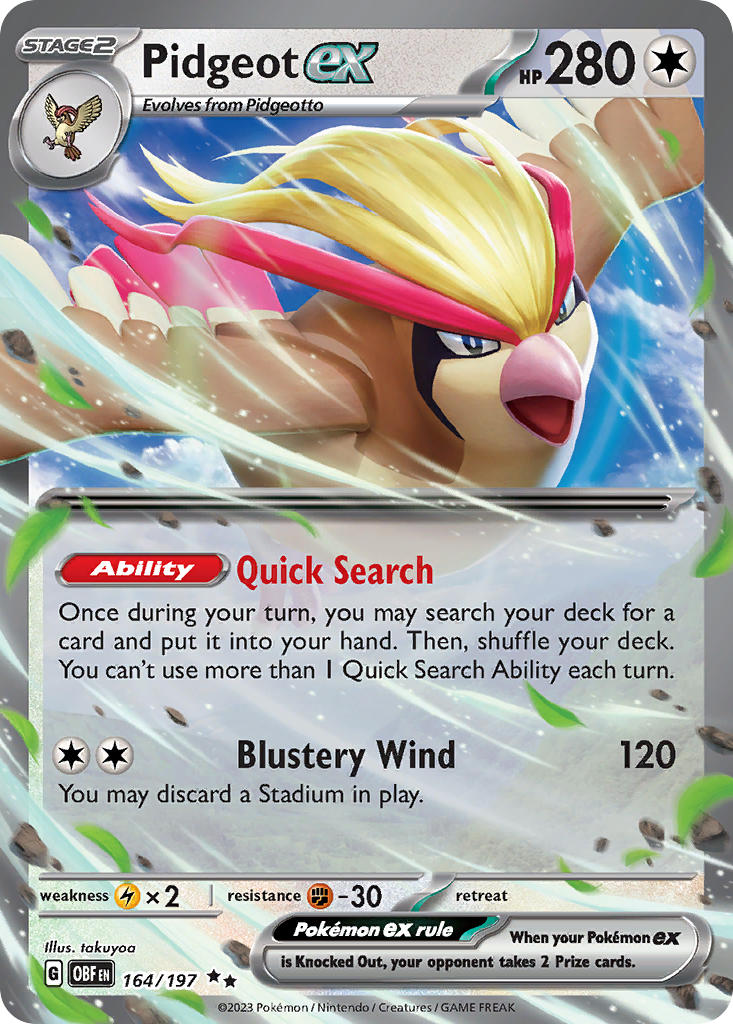
Garbodor
The other key card in the Slowking deck is Garbodor. Garbodor’s Garbotoxin Ability shuts off all opponents’ abilities, as long as it has a Pokémon Tool attached. While this is a specific clause, the only options to remove Pokémon Tools are Trainer cards, which are affected by Slowking’s Mind Games. Garbotoxin also slows down the game as a whole when paired with Slowking, meaning the attacking Pokémon in the deck can get set up. On top of all of that, there are multiple printings of Garbotoxin Garbodor, which means you are less likely to prize this crucial part of the combo.
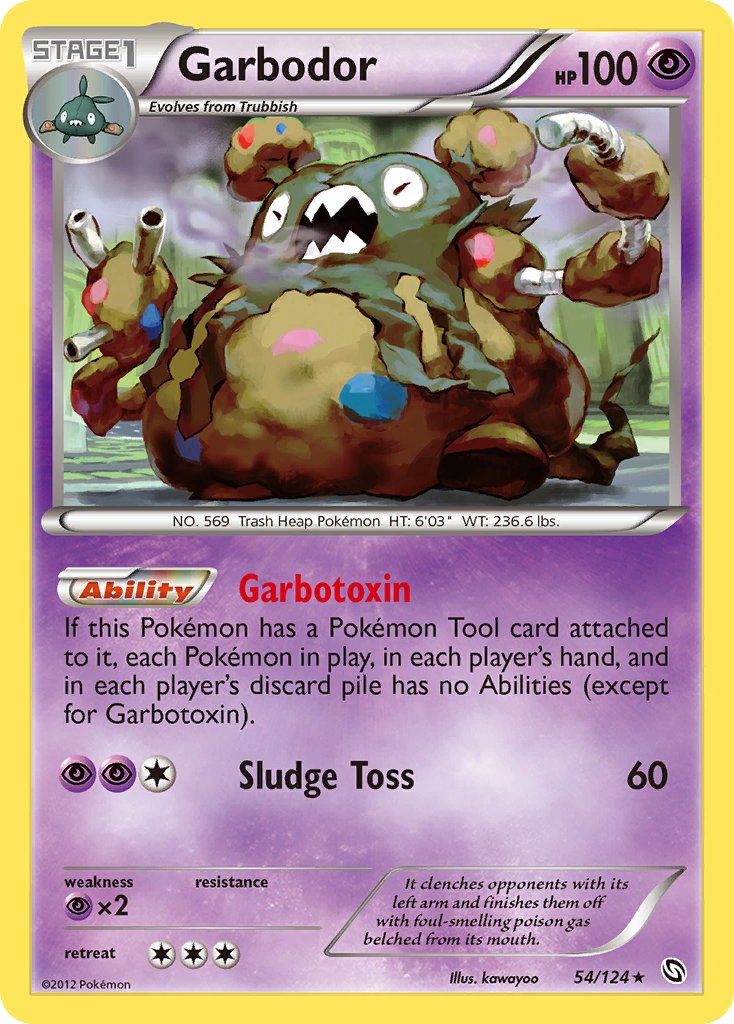
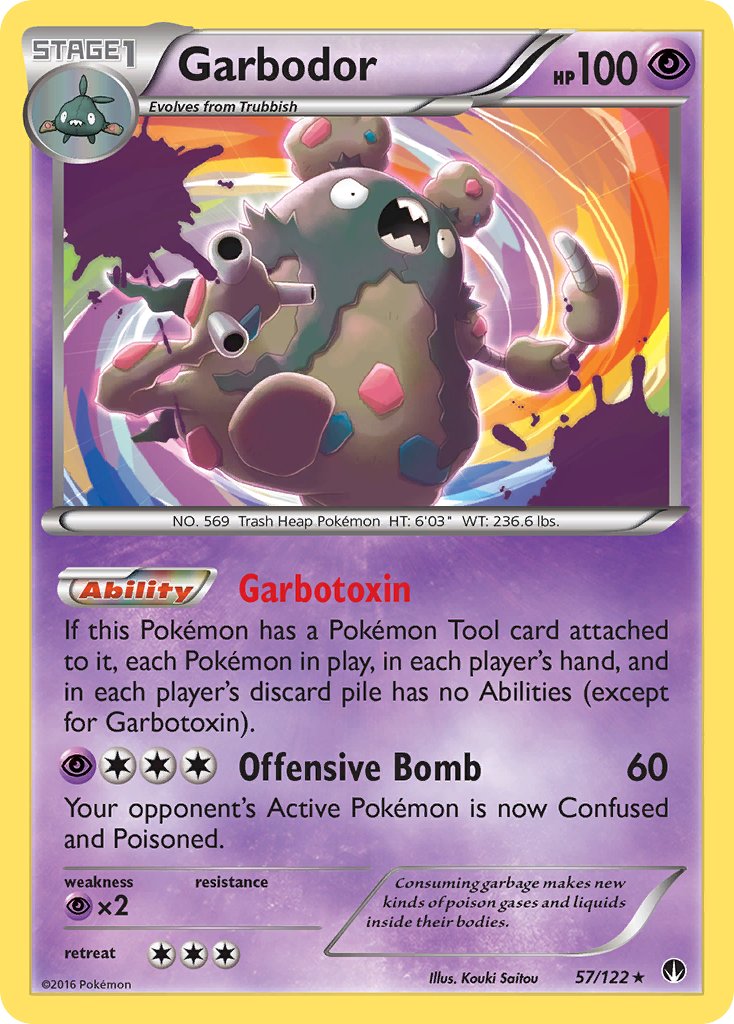
Mewtwo V-Union
The final Pokémon that properly rounds out the core of the deck is Mewtwo V-Union. This is the main attacker of the deck and slots in well. While it takes 4 deck slots, the versatility of Mewtwo V-Union makes it a worthwhile inclusion. Each of its 4 different attacks serves their own role in being able to close out games. Typically, V-Union Pokémon are too slow and inconsistent in Partner Battles to be desirable. However, the combination between the previous 3 Pokémon makes it possible to put the super powerful V-Union in play.
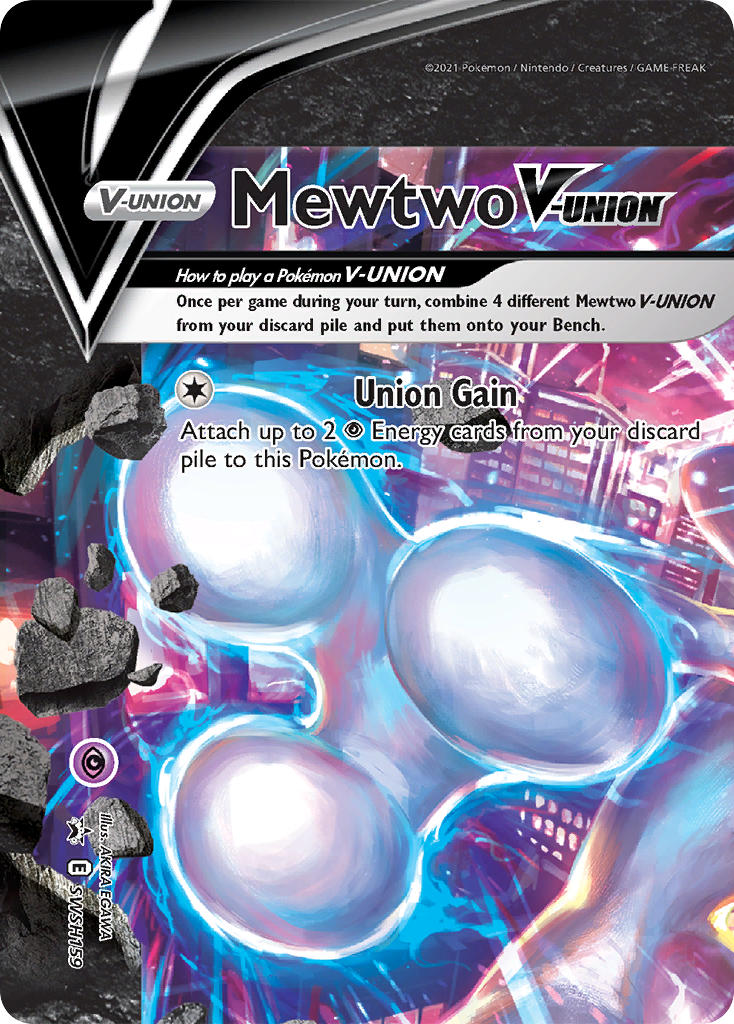
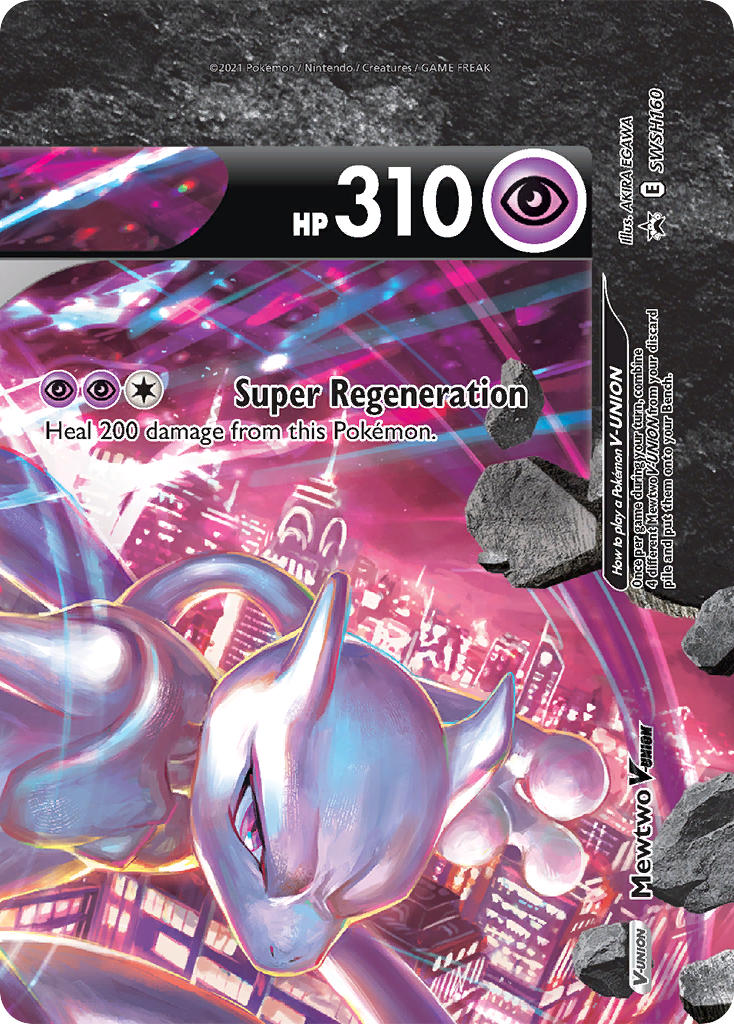
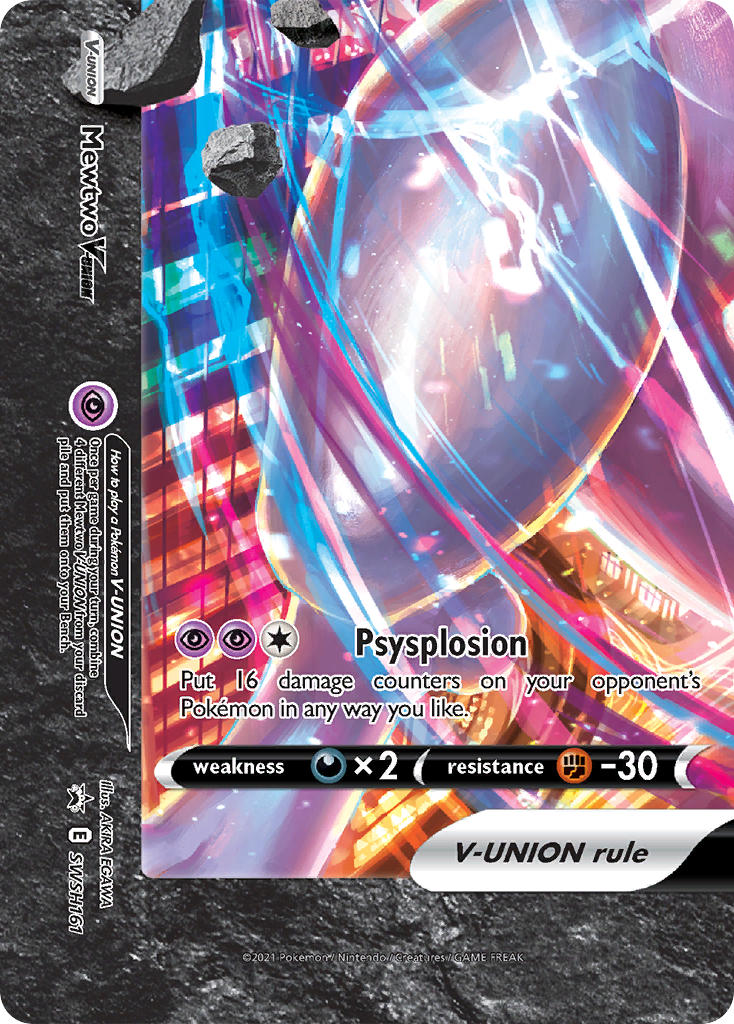
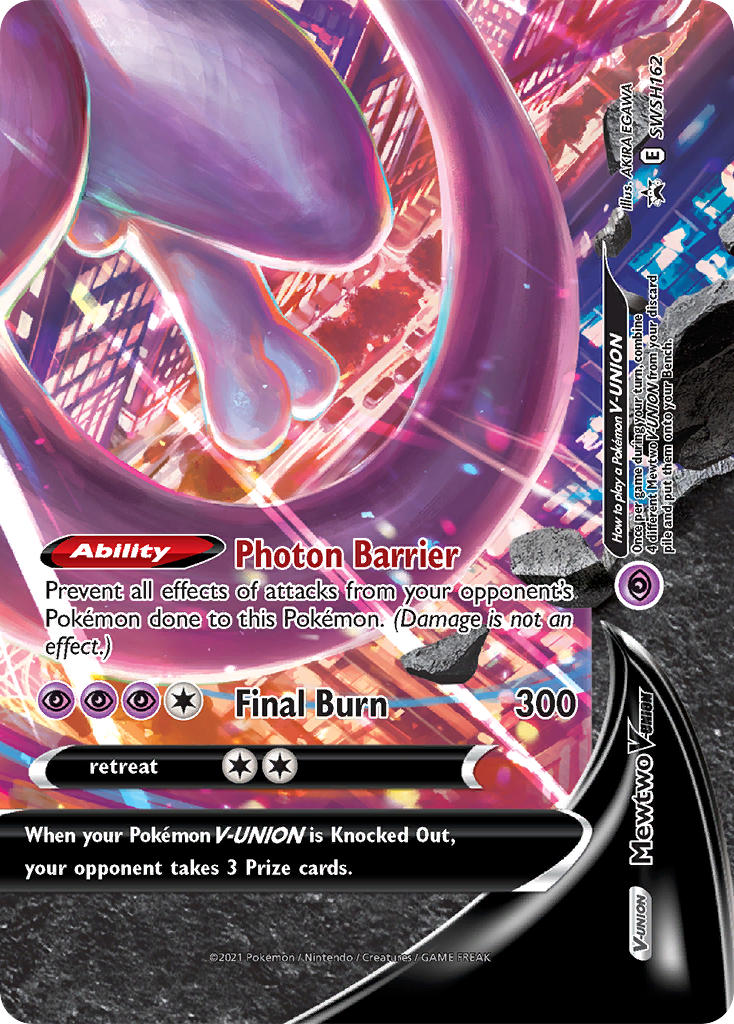
Other Pokémon
The rest of the Pokémon in the deck are shown below and serve their own roles. One major thing to note is that only one of the Pokémon has an Ability. The rest are either Poké-Powers or Pokémon-Powers. Of special note is Gengar & Mimikyu GX. While the card itself has continued to climb in price, it is an essential part of the deck if you get going slowly and are unable to establish early Pidgey and Trubbish.
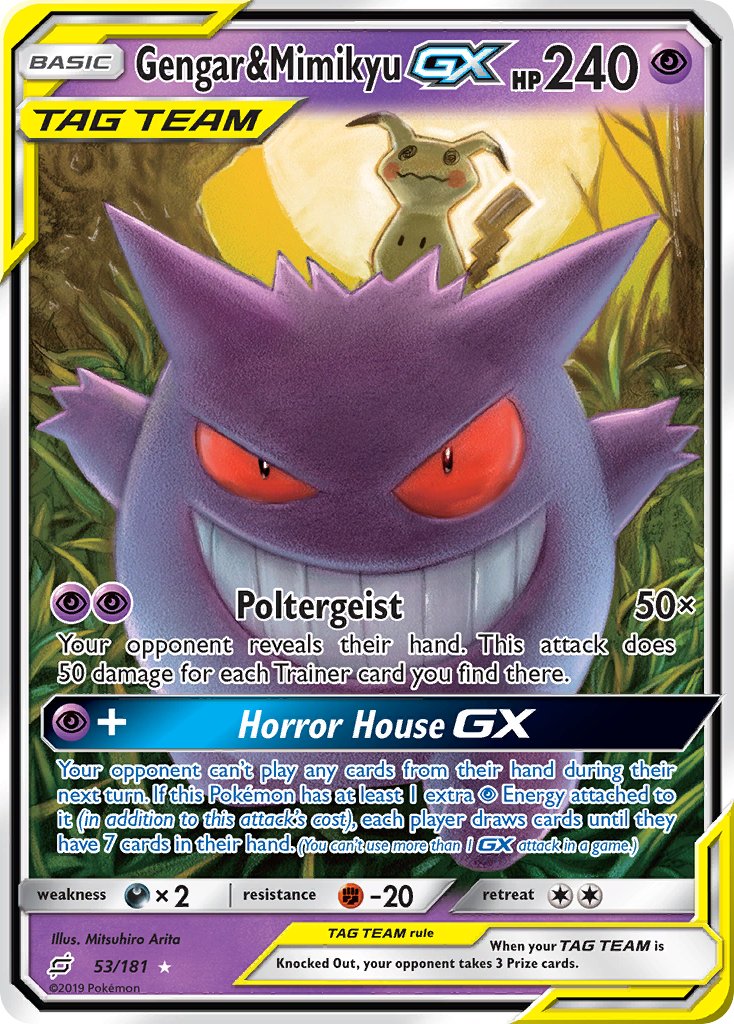
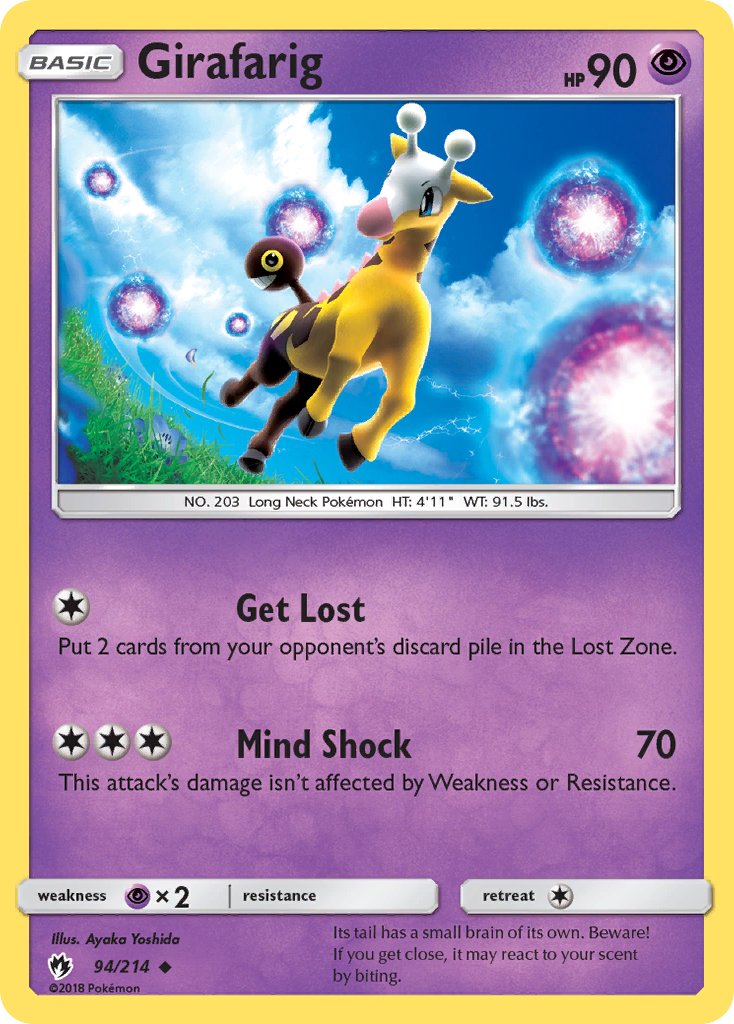
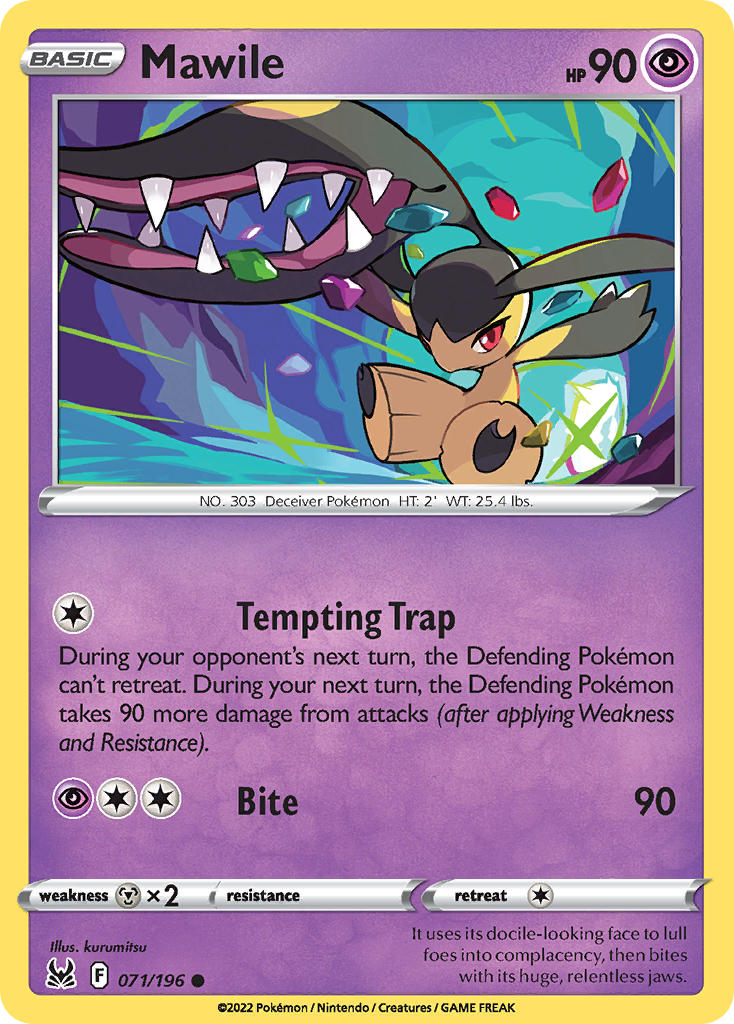
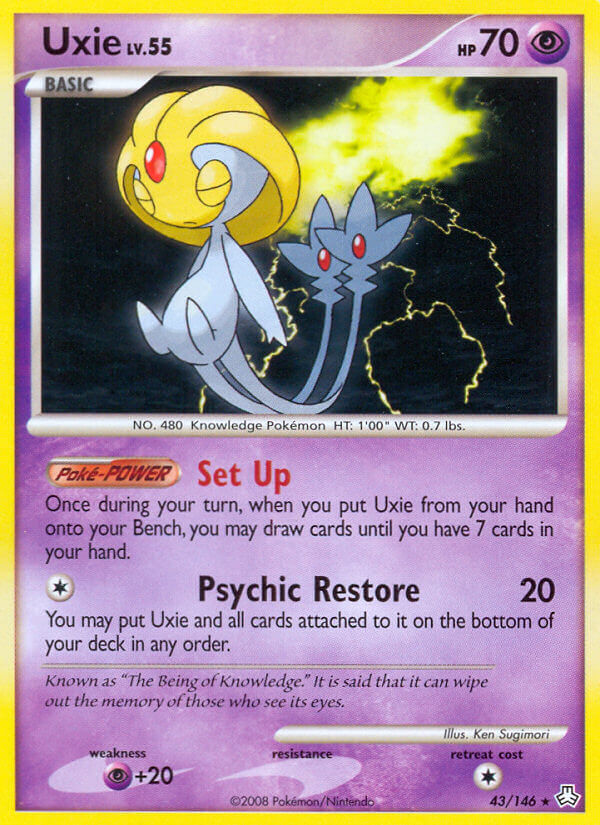
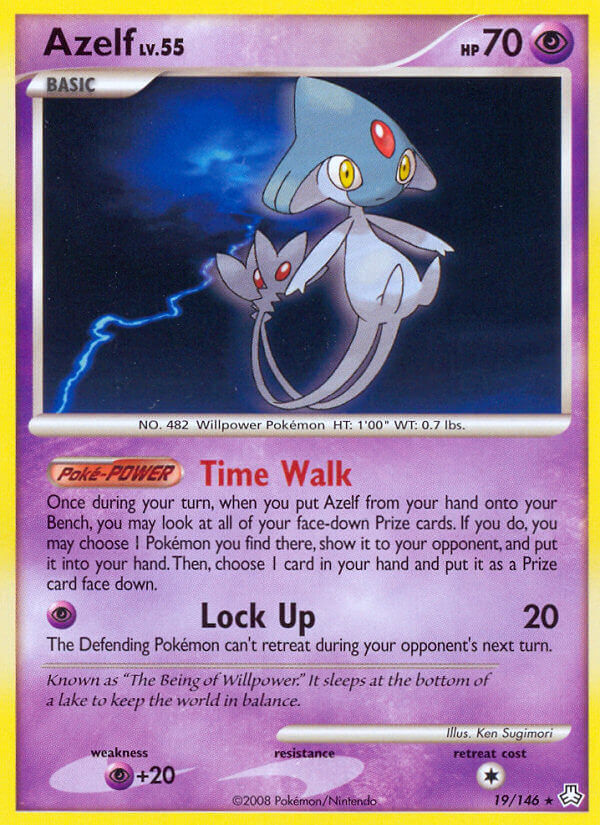
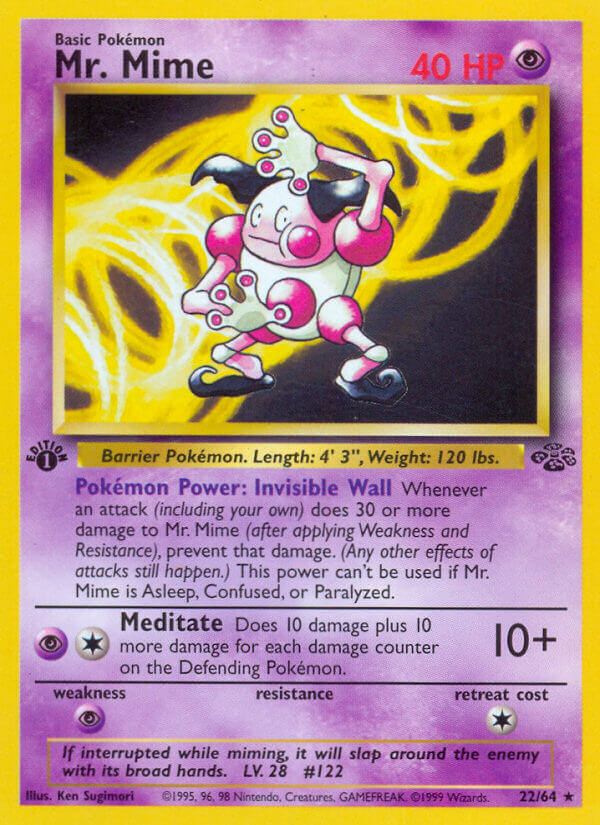
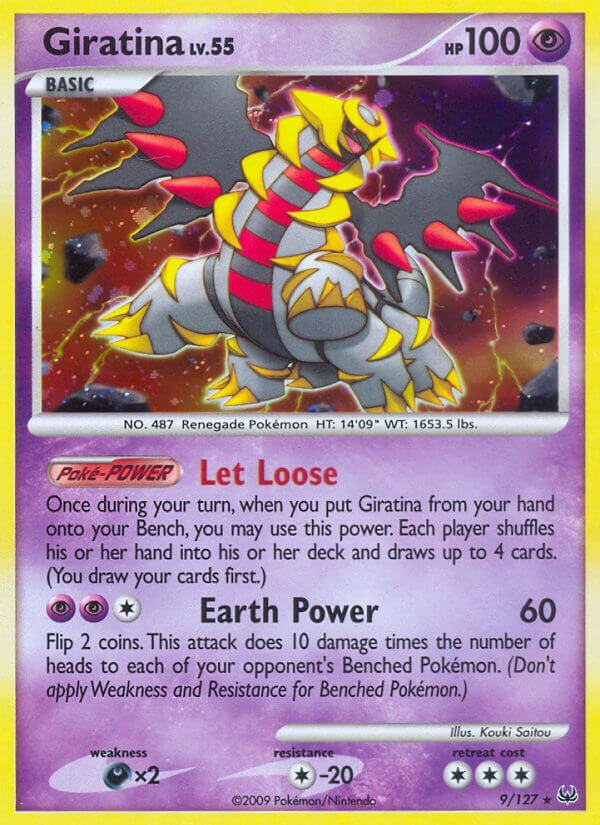
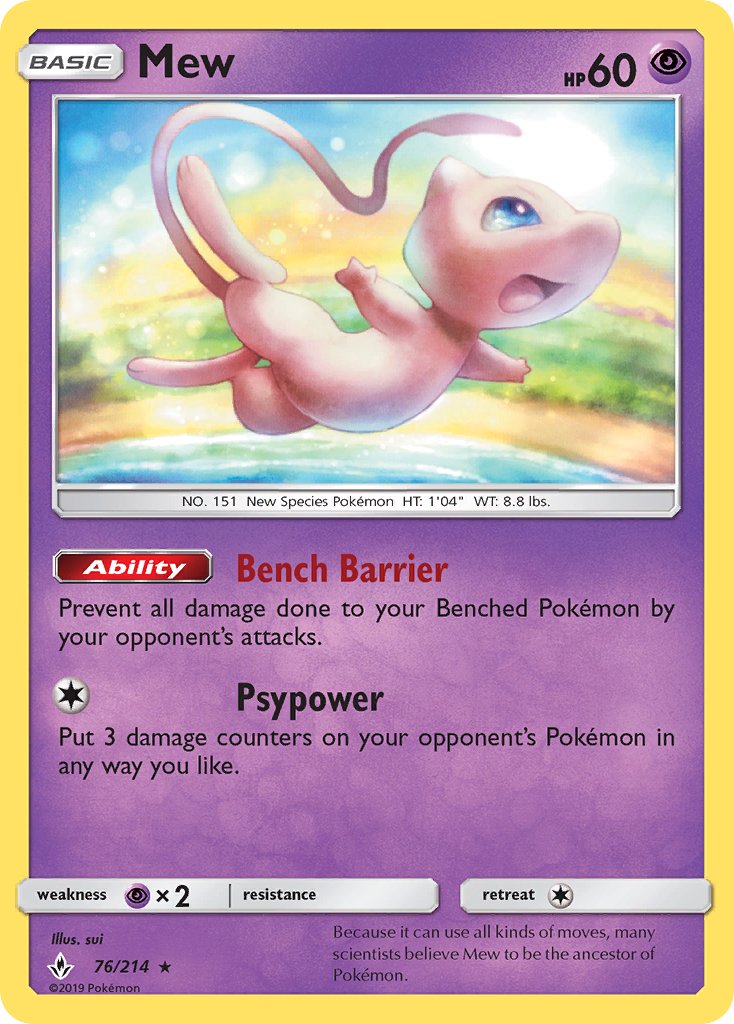
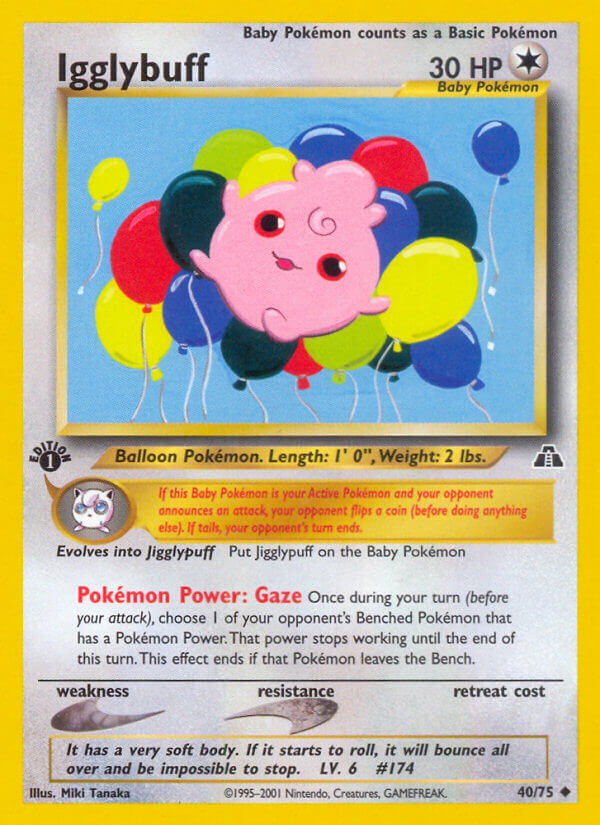
Trainers (and Supporter Supporters) for this deck by category:
Does not include core cards that are in almost all decklists
Hand Control Package
While there are many things that already make this deck menacing, it is further amplified by the amount of hand control cards. Many of them work with each other and benefit from the effects of others. I’ll talk about them in order from least impactful to most impactful.
The least impactful hand control card in the deck is Hand Trimmer from Temporal Forces. If a better hand control card comes out on an item, I would quickly cut this card for that one. However, that’s not to say that Hand Trimmer doesn’t have its merits. If you are unable to find some of the stronger hand control cards early in the game, Hand Trimmer can force your opponent to get rid of possibly useful cards from their hand. Xerosic’s Machinations from our newest set, Shrouded Fable, is an incredibly powerful card similar to Hand Trimmer that should be played in the deck.
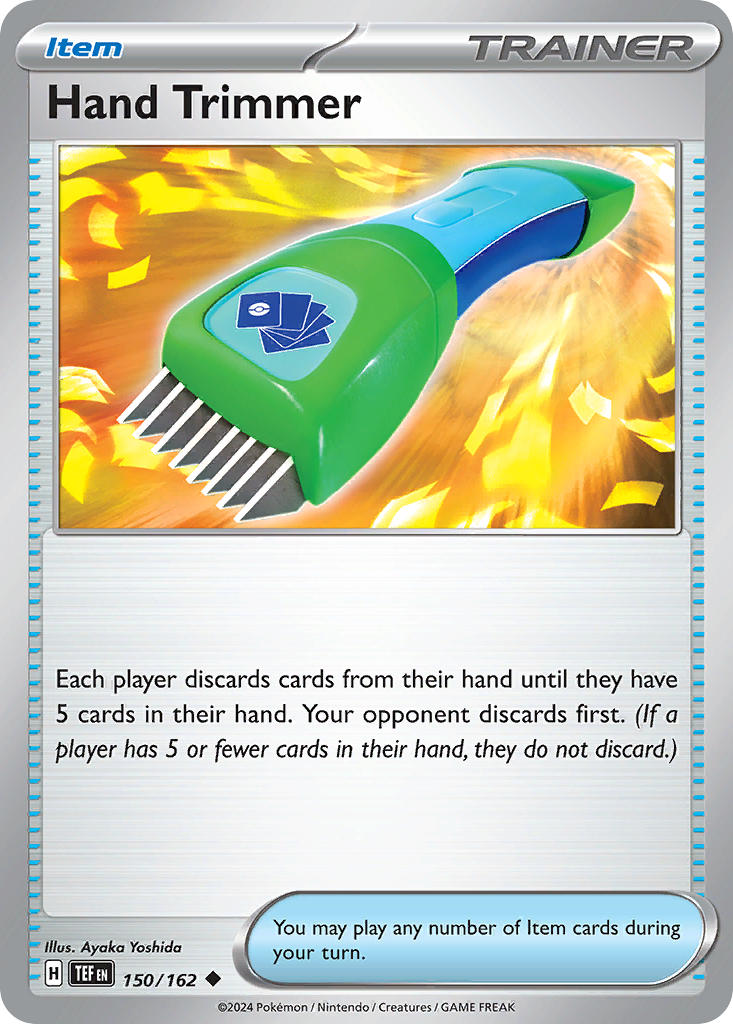
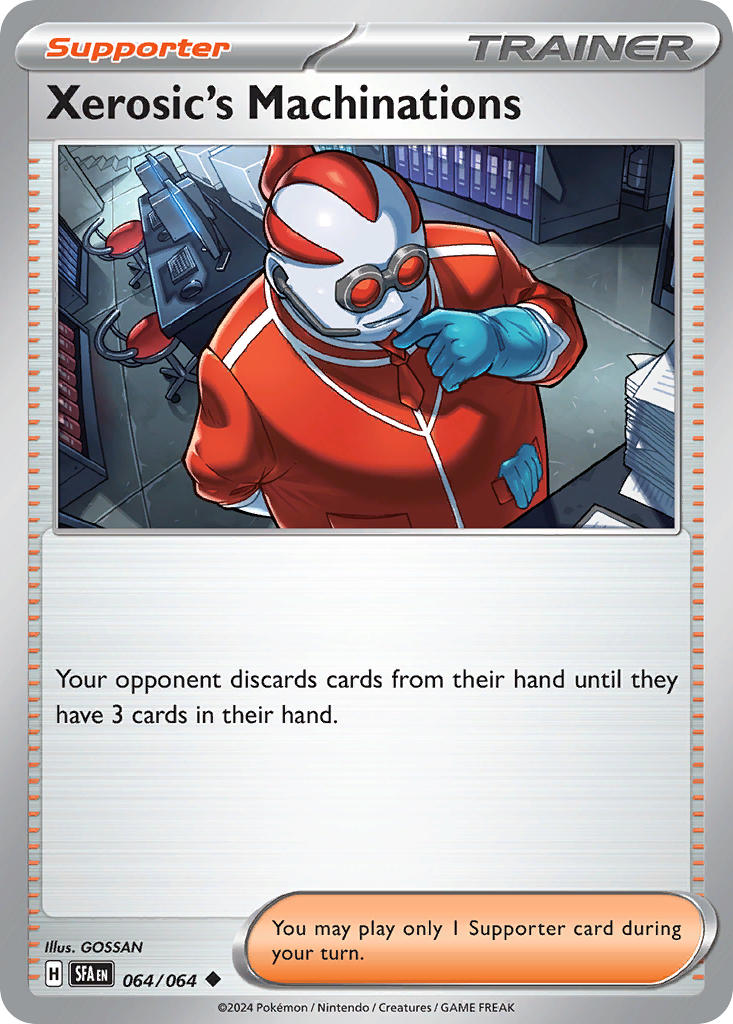
Next is Delinquent. Forcing your opponent to discard 3 cards from their hand is extremely powerful. However, it does require that a Stadium be in play. The deck only plays one Stadium, making this combo difficult to pull off at times.
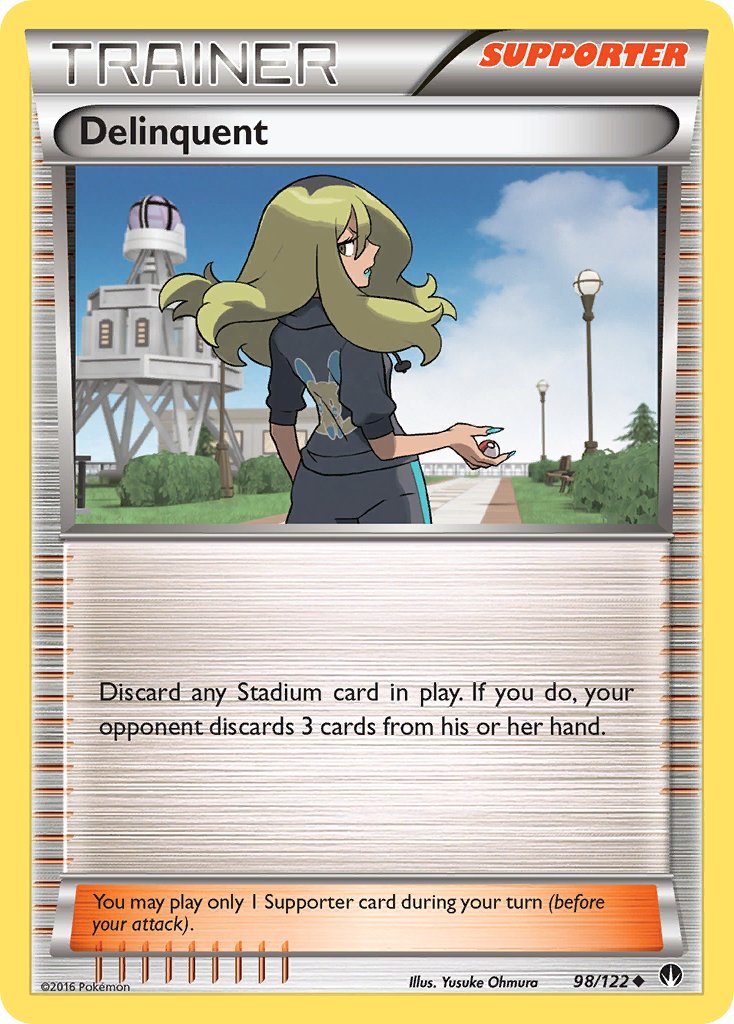
Judge is an extremely powerful card. However, it does force you to do the same. Often, the deck likes to accumulate a large hand and this card resets it. This card works best if you are able to Quick Search for another hand control card after the Judge. It is important that the Judge played in the deck is the one from the HGSS era, as it is not considered a Trainer card.
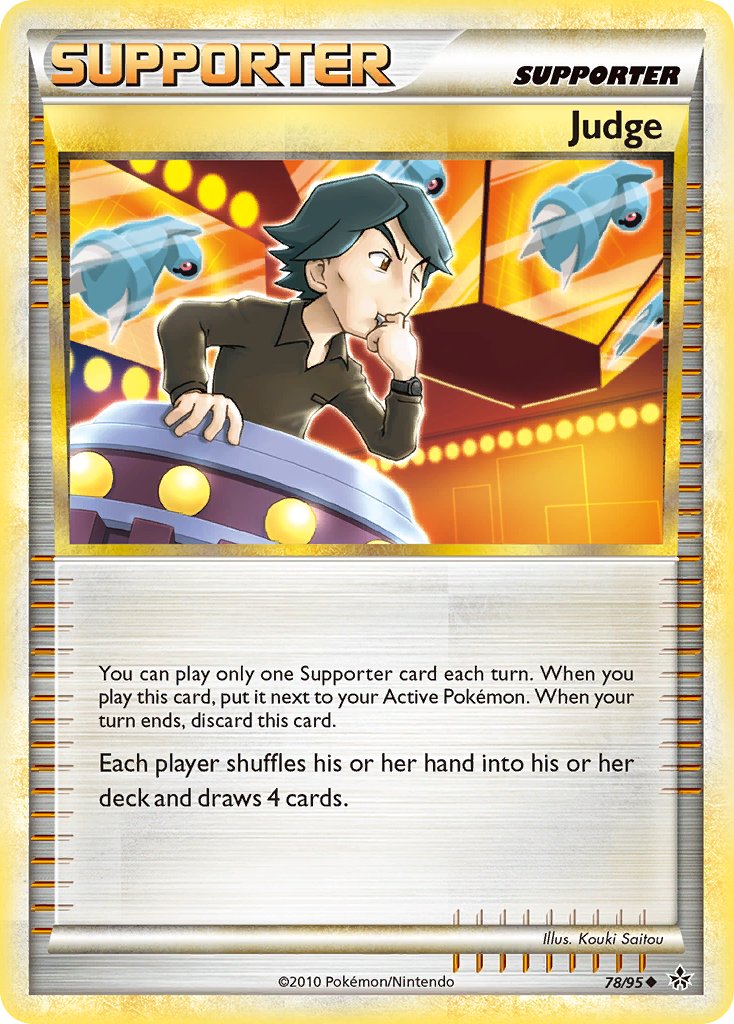
The next two cards I’ll talk about together. They are The Rocket’s Trap and Rocket’s Sneak Attack. Both of these cards attack your opponent’s hand in different ways. The Rocket’s Trap is arguably more powerful, so I’ll talk about that one second. Rocket’s Sneak Attack allows you to target a Trainer card in your opponent’s hand and put it in their deck. This can remove a strong draw Supporter if they are on the low hand size. The Rocket’s Trap paired with Judge or two of the other cards that I’ll mention later is the deck’s strongest combination of cards for hand control. The only downside of this card is that its effect is on a flip. However, if you flip heads, your opponent is left on a 1 card hand going into their turn.
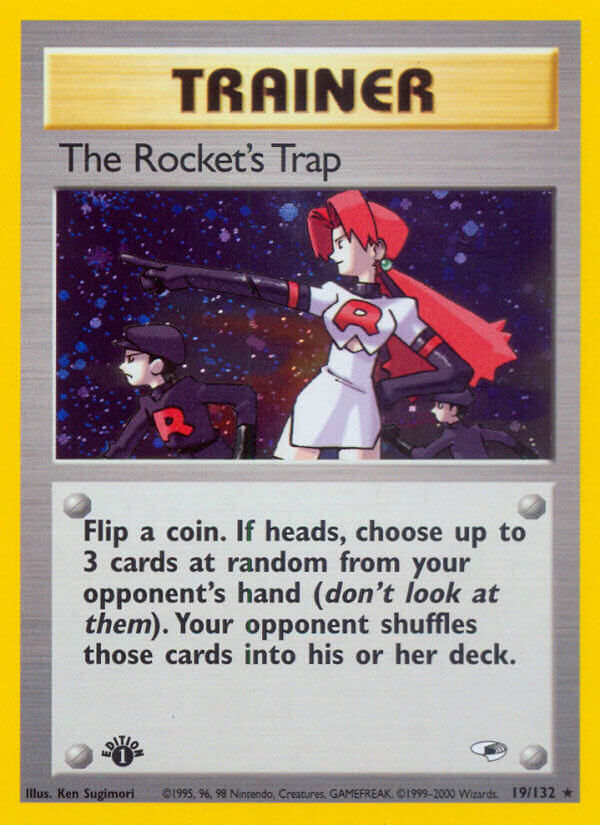
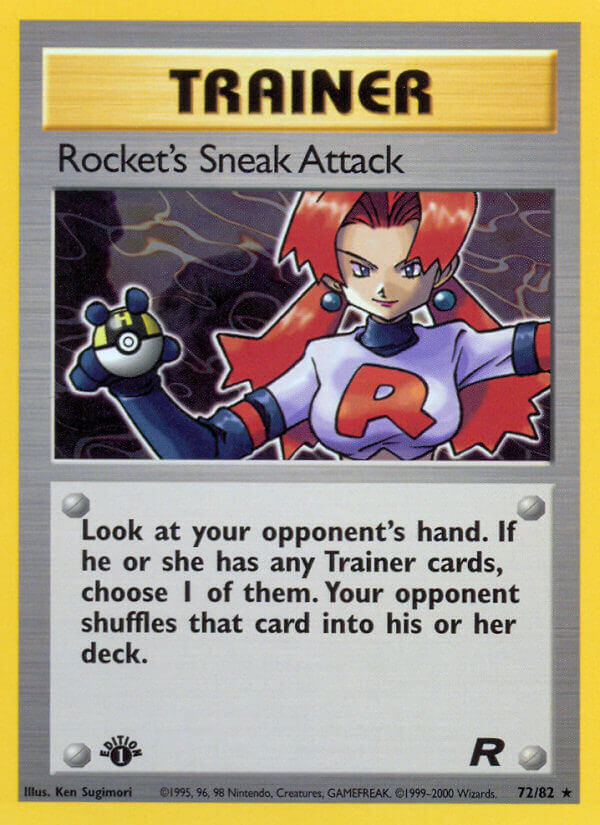
The final two hand control cards I’ll talk about together as well as they provide the same effect. The cards are Imposter Oak’s Revenge and Red Card. In short, both of these cards read your opponent shuffles their hand into their deck and draws 4 cards. Red Card is an Item card, meaning it can be searched out of the deck with cards like Arven making it the strongest hand control card in the deck. However, Imposter Oak’s Revenge does have its niche moments where it is stronger. The difference between the two cards is that Imposter Oak’s Revenge forces you to discard a card from your hand in order to use it. This can be extremely useful if you are needing to discard Mewtwo V-Union pieces or want to thin useless cards out of your deck.
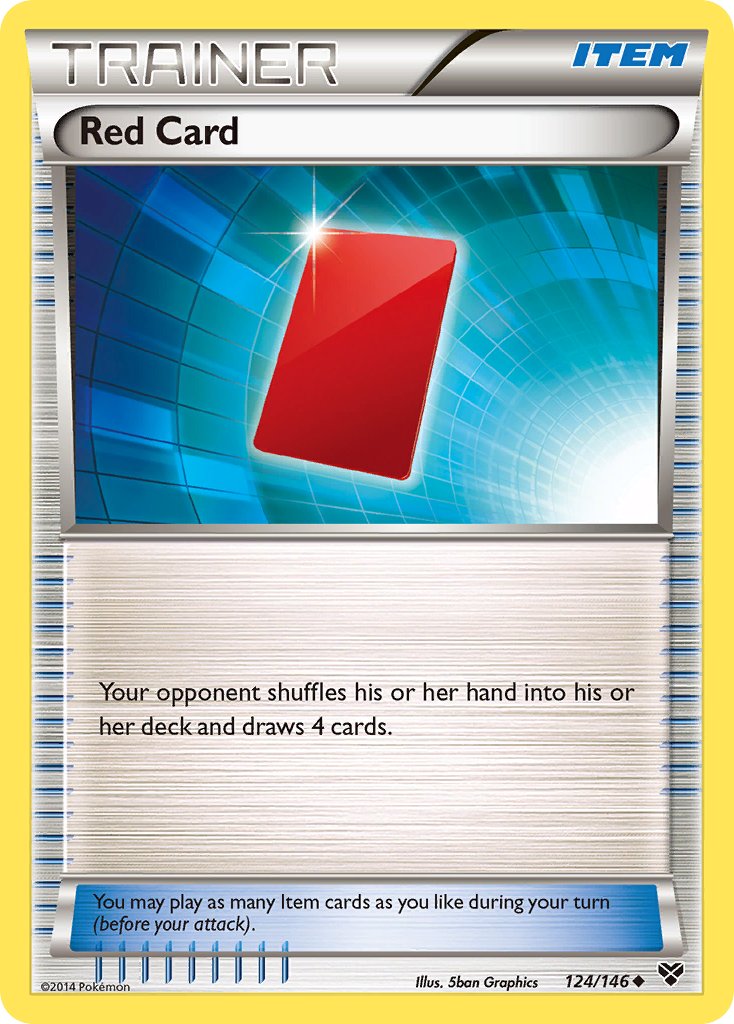
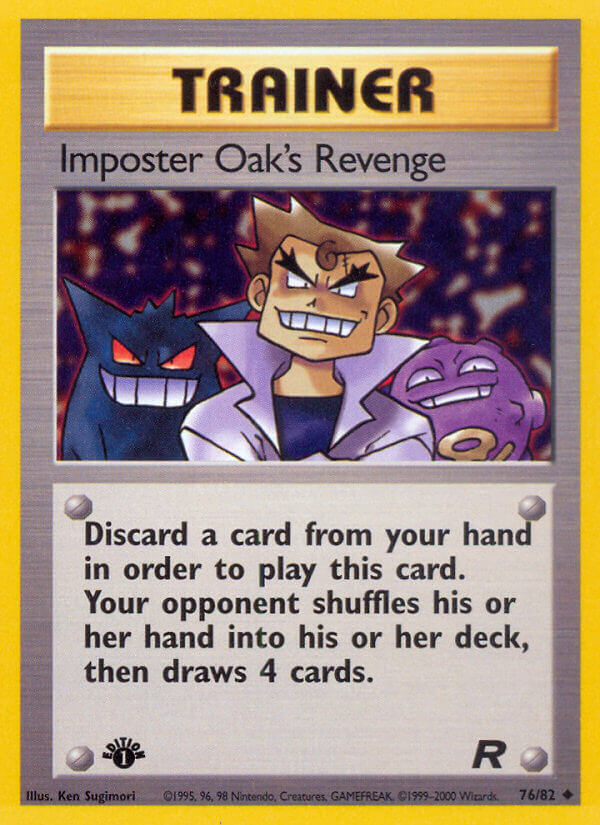
Early Game Safety Net
There are 3 cards in the deck that prevent your opponent from taking prize cards when they knock them out. All three of these cards are Trainer cards that act as a basic Pokémon but do not give up prizes. The three that I have elected to play are Clefairy Doll, Mysterious Fossil, and Robo Substitute. Lillie’s Poké Doll is a card that was printed more recently with a similar effect to these cards, however it also is much harder to get rid of from your board. All three that are played in the deck allow you to discard them in play whenever you’d like. Lillie’s Poké Doll puts itself on the bottom of your deck, but only if it is in the Active Spot.
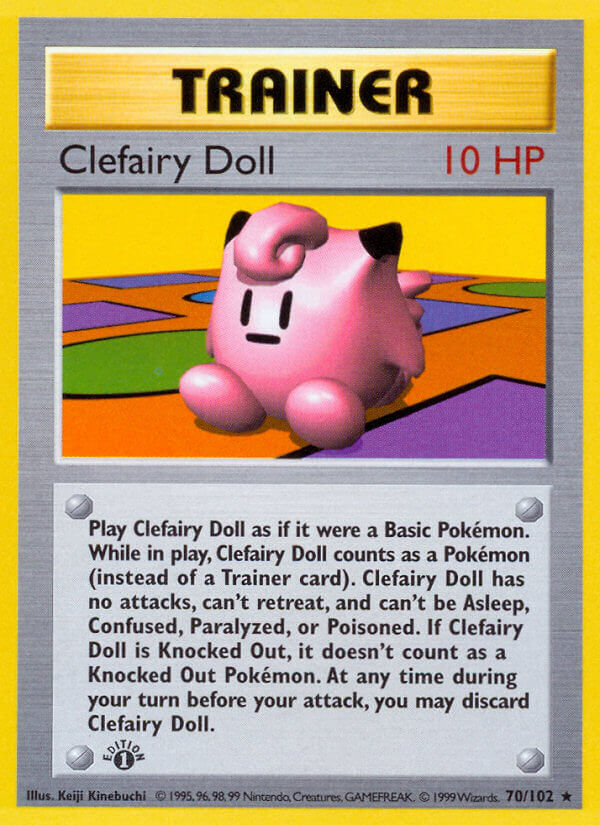

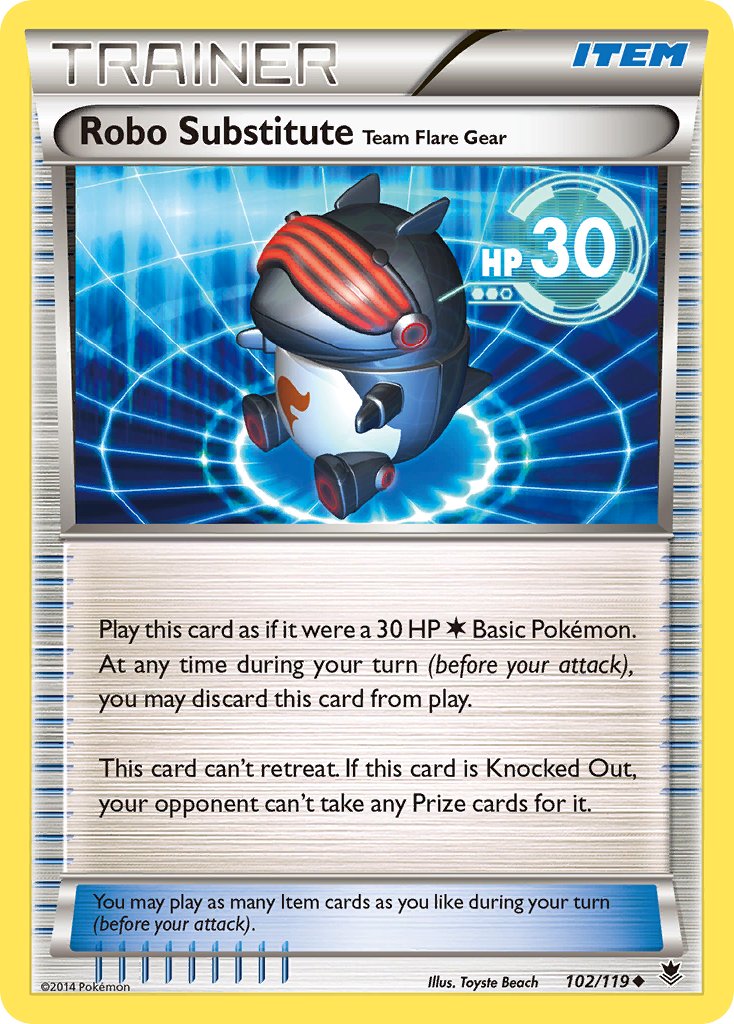
Other Strong Trainers
There are a couple of other extremely strong Trainer cards that didn’t fit into a single category, so I’ll discuss them now. Firstly, Lt. Surge’s Strategy pairs extremely well with the deck. Often, your opponent takes a prize or two before you can begin to establish the lock. On top of that, the main attacker of the deck struggles to establish itself until many turns in the game. This allows for many turns where Lt. Surge’s Strategy can turn the tide of the battle. Next is Hex Maniac. Hex Maniac is a very solid card to play turn one or two as long as you don’t need to use your Supporter card to help you establish your board. Games where it takes a few turns to establish a Garbodor benefit greatly from this car. Buddy-Buddy Poffin finds use in this deck as an early game basic search. All of the Pidgey and Trubbish in the deck have 70HP or less, making Buddy-Buddy Poffin essentially a double Nest Ball in the early turns for those crucial Pokémon. Battle Compressor was a ridiculously good card during its time in Standard and is even more powerful in Expanded. In Partner Battles, this card fills niche rolls to help players discard cards that they prefer in the discard pile. For this deck, Battle Compressor makes sending all 4 Mewtwo V-Union pieces to the discard pile manageable. Rare Candy (HGSS and earlier) and Pokémon Breeder both allow you to skip the Stage 1 of an Evolution line. This means you can go straight from Pidgey to Pidgeot, skipping Pidgeotto. The reason why it is important to play a Rare Candy from before Black and White is because they are missing some text that is on newer Rare Candies; this allows you to evolve Pokémon the first turn they were put into play! Another card I want to mention is Energy Removal. This card is key in slowing your opponents down as there are no cards in the deck that prevent opponents from playing Energy cards. However, Super Energy Removal is not played. This is because the deck runs on a very limited amount of Energy, meaning that it can feel really detrimental returning one of your hard-earned attachments from hand, back into your hand. U-Turn Board deserves a special shout-out. Most Partner Battles decks do not play Faba or Lost Vacuum. Instead, decks play Windstorm and Field Blower. If U-Turn Board is discarded from the Pokémon it is attached to, it goes to your hand instead. This means you can immediately reestablish the Garbotoxin lock without needing to dig through your deck for another Pokémon Tool card. Finally, the deck struggles with bench space, so a copy of Sky Field is in the deck to allow you to over-bench, then discard bad Pokémon from your board. This also allows you to Delinquent without your opponent playing their own Stadium card.
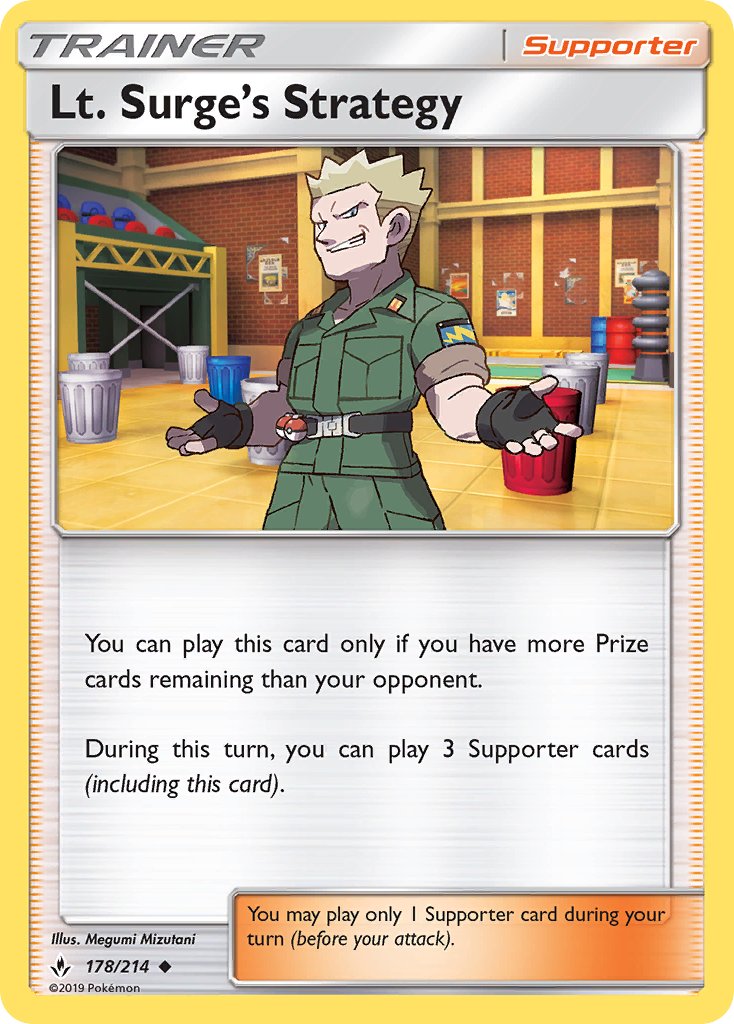
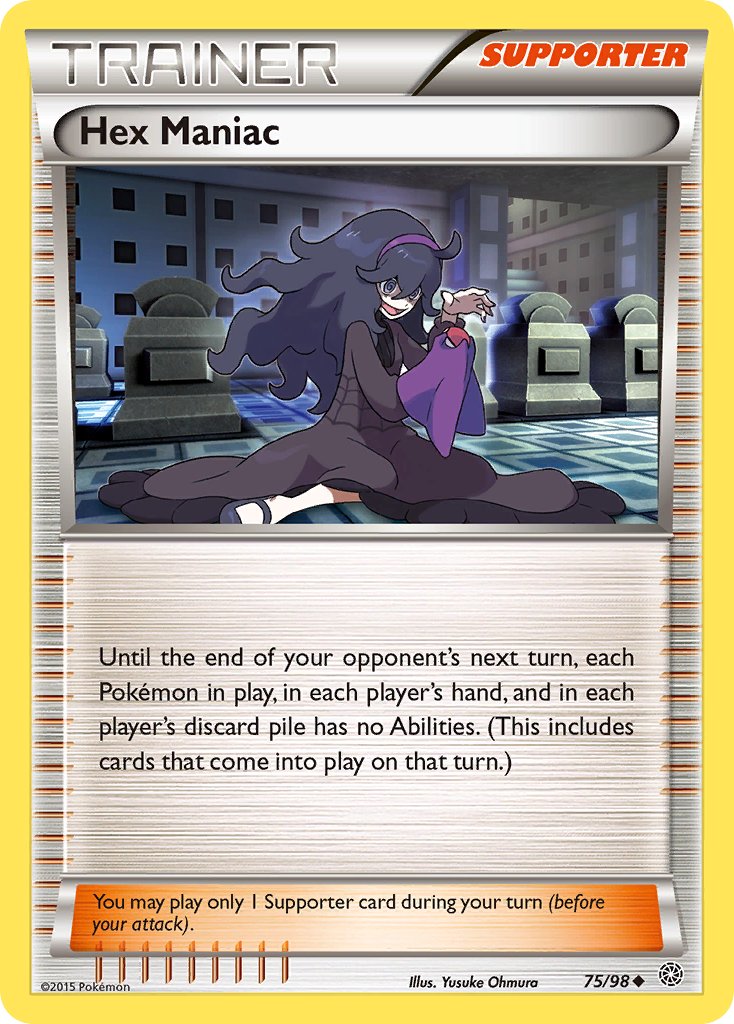
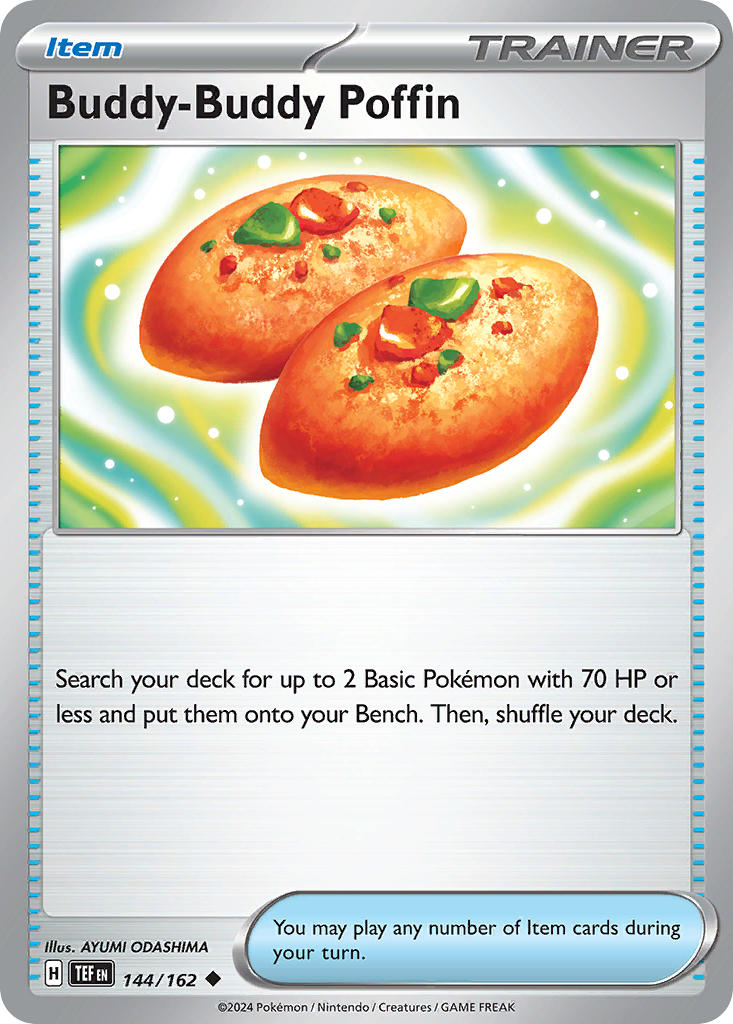
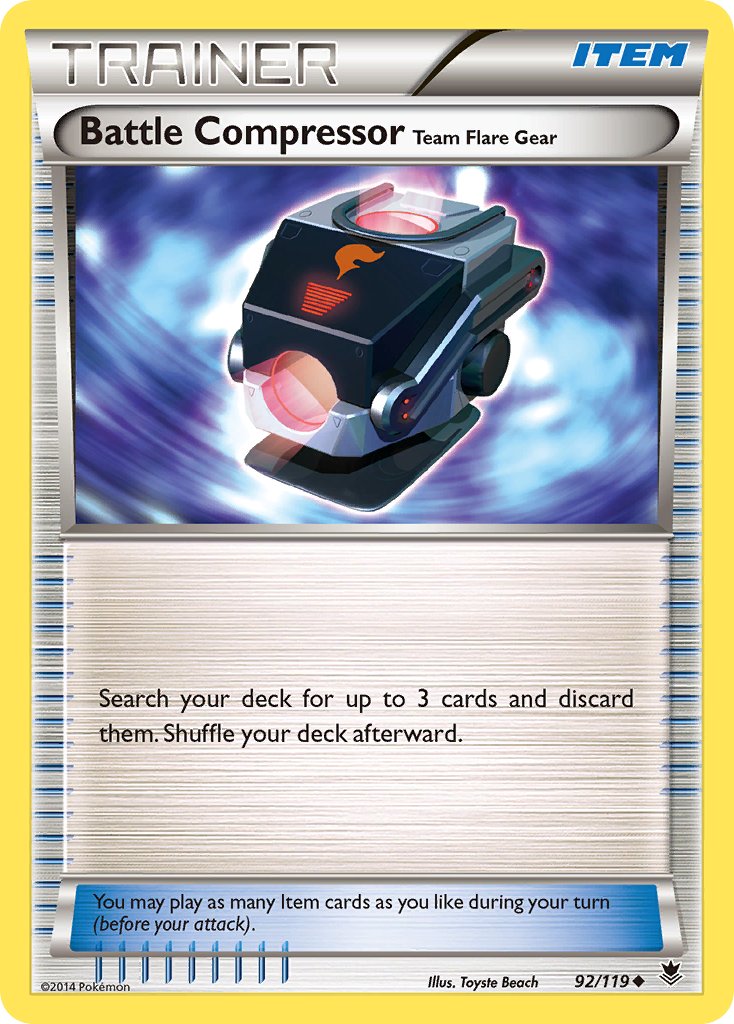
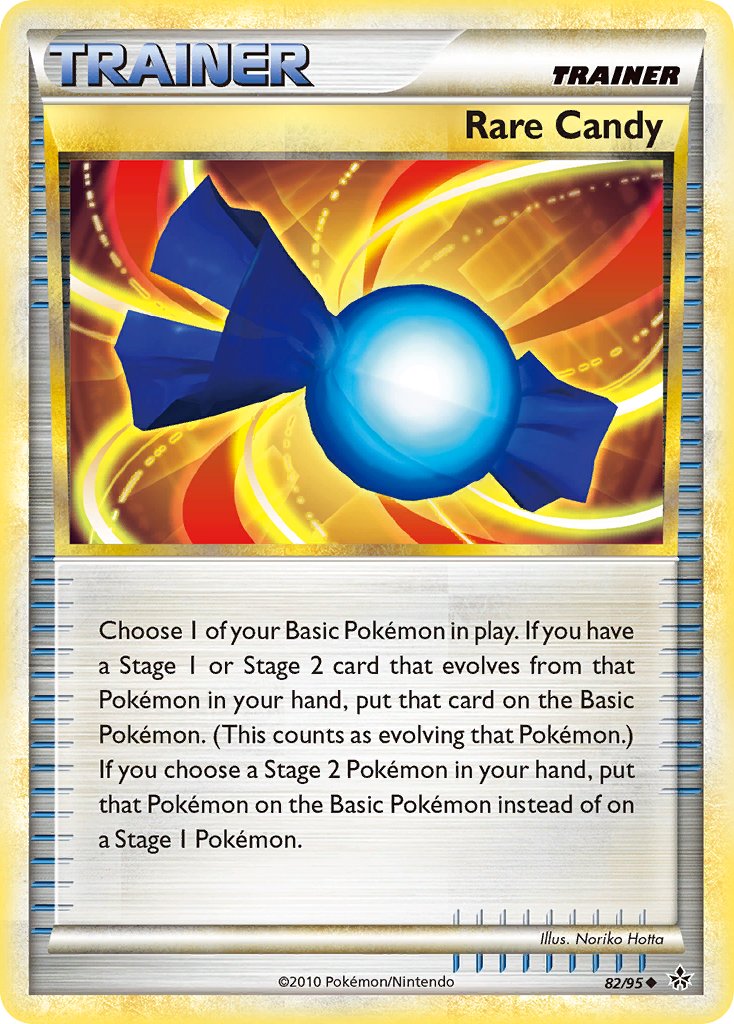
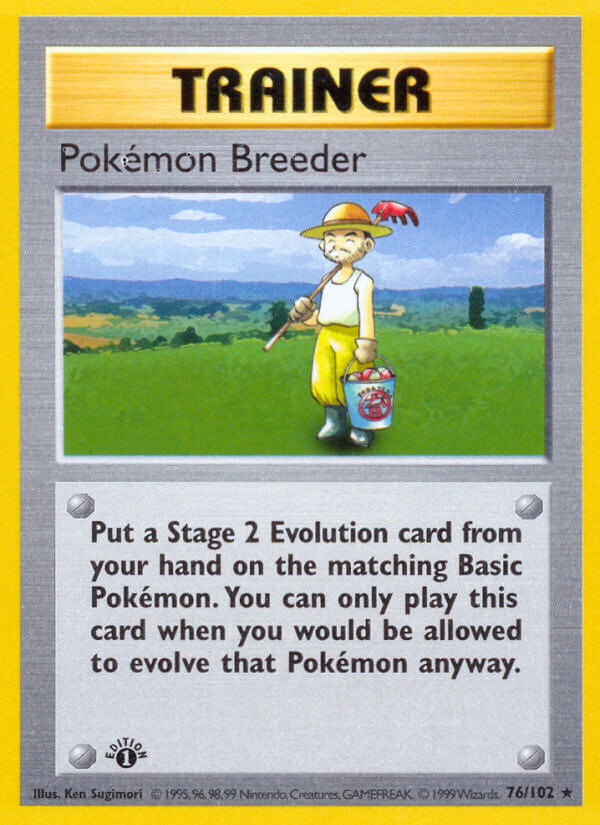
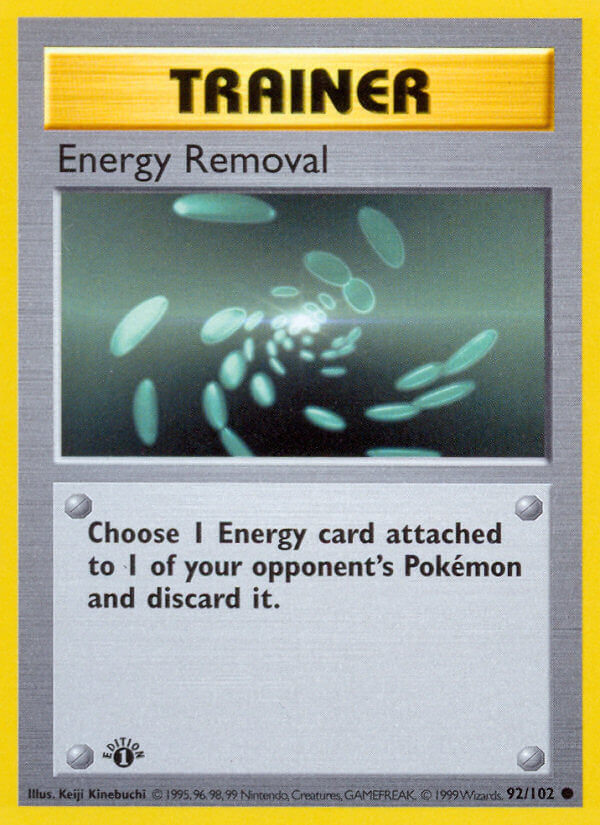
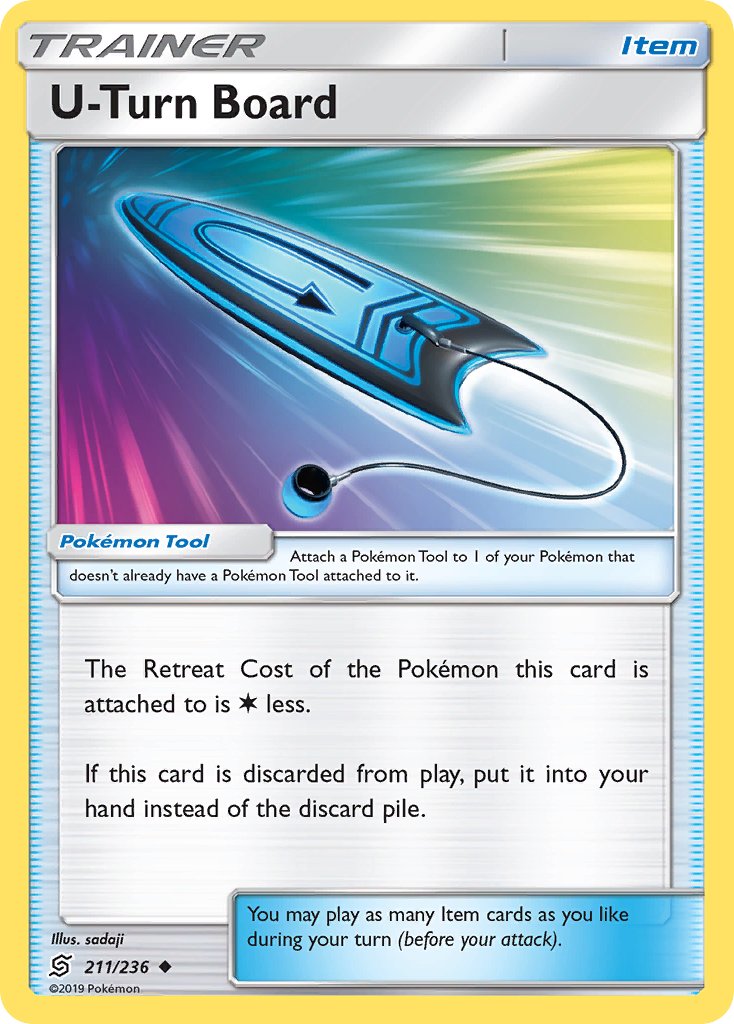
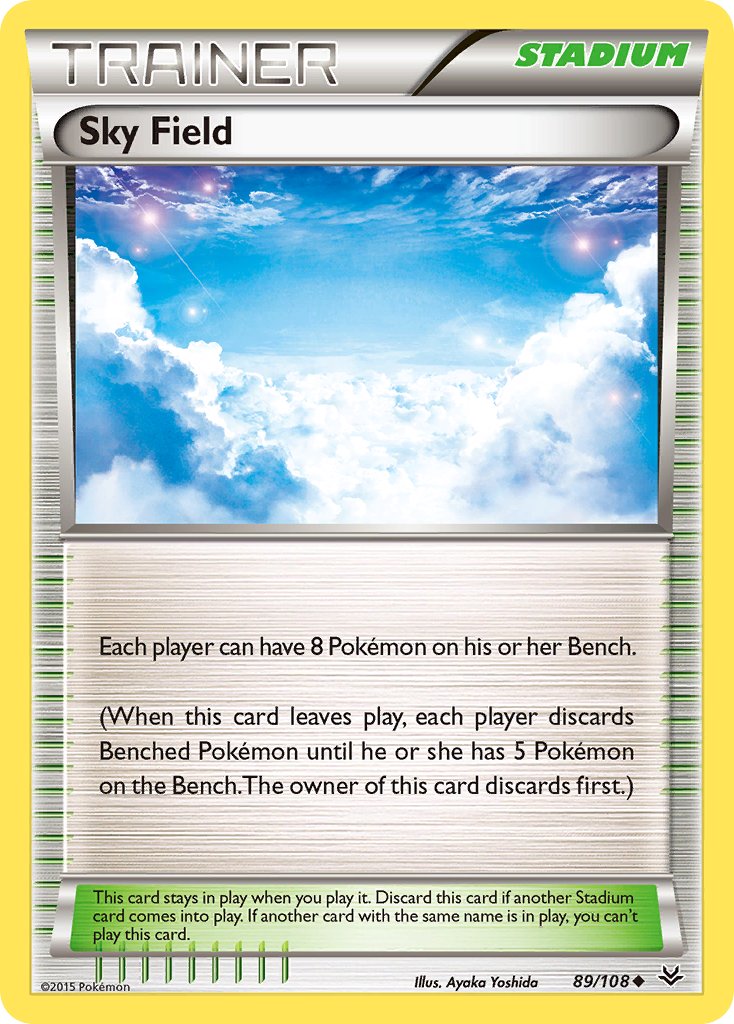
Notable Core Cards
The most important Trainer card in the deck is Lysandre’s Trump Card. This card allows you to turbo through your deck using cards like Professor Oak, Uxie, and the Professor Supporters to find the perfect cards on any turn. To complement Trump Card, Dowsing Machine, Item Finder, Junk Arm, and VS Seeker are played to continue the turbo and recover Trump Card to repeat again.
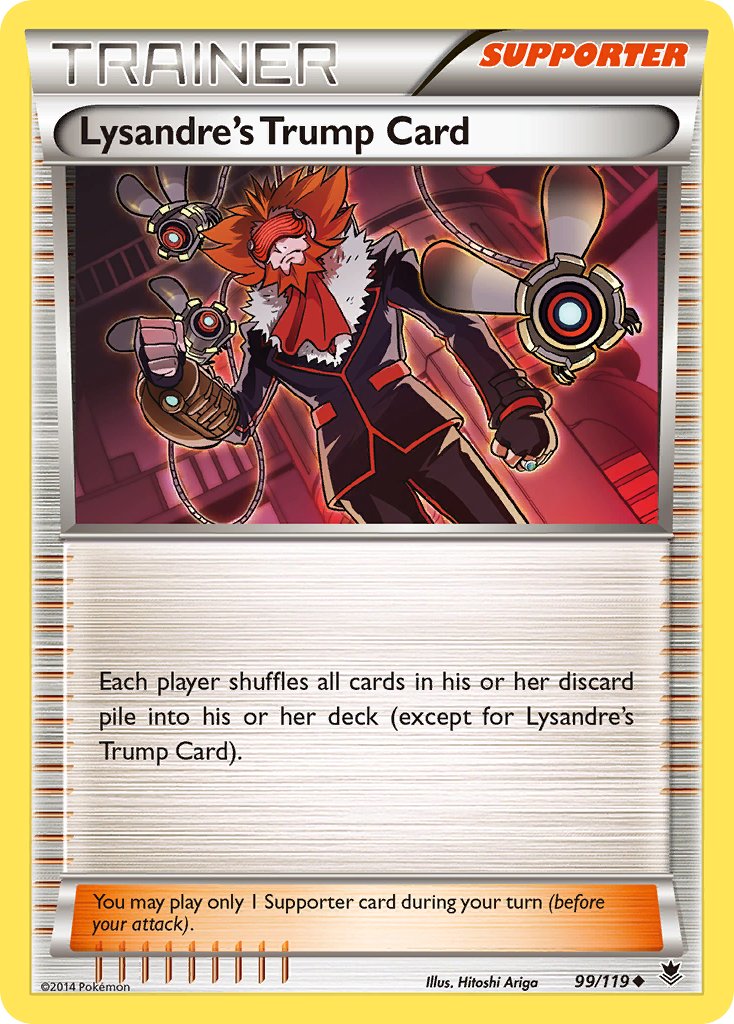
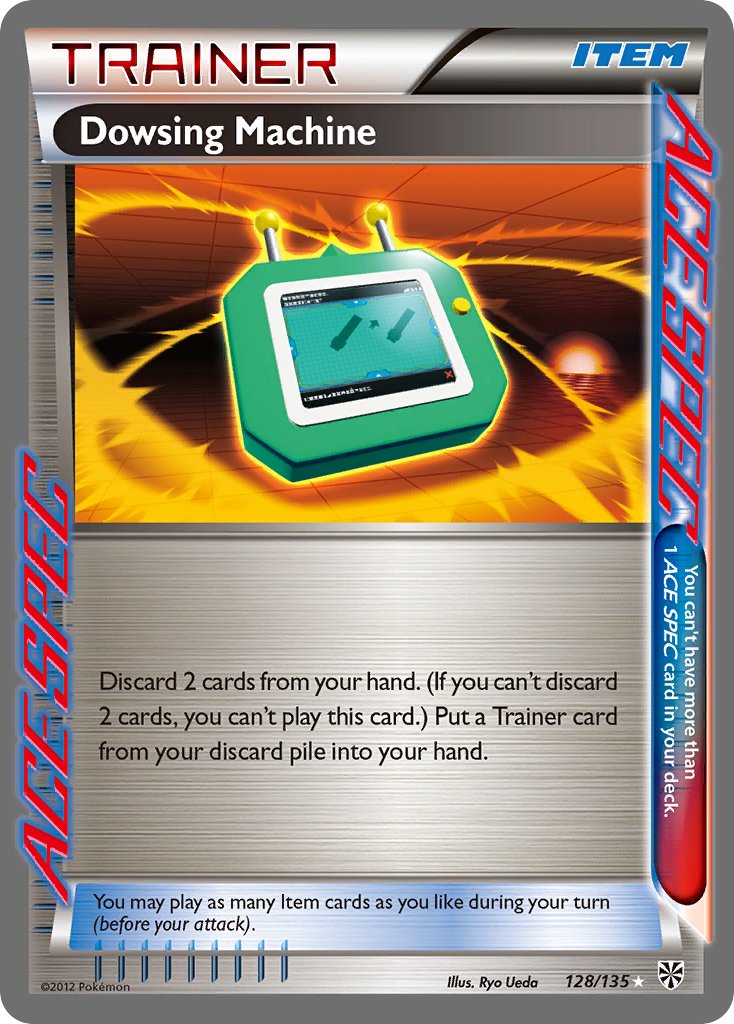
Energy:
Energy Reasoning
Compared to most Partner Battles decks, my Slowking list runs very few Energy cards: 7 Basic Psychic Energy and 1 Recycle Energy. Mewtwo V-Union, as costly as its attacks are, has the Union Gain attack which allows it to accelerate 2 Psychic Energy from your discard to itself. Recycle Energy is played because quite a few cards in the deck require only one Colorless Energy to attack and being able to return it back to your hand when they get knocked out preserves the limited amount of Energy in the deck.
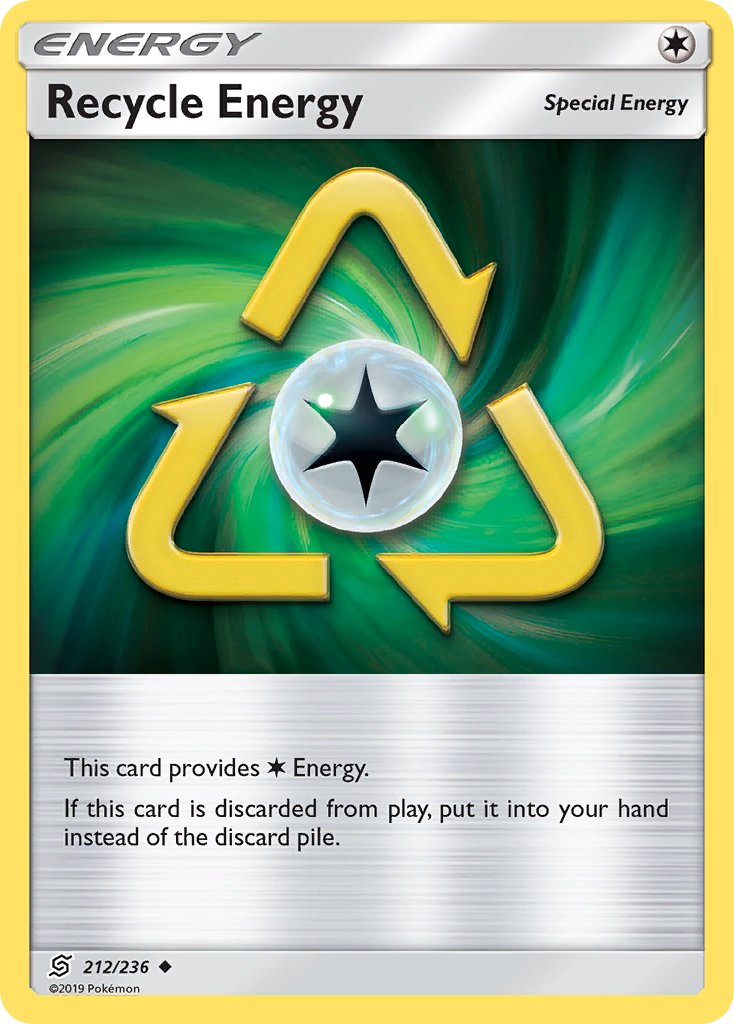
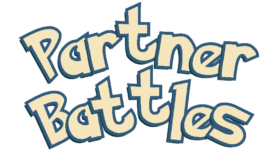
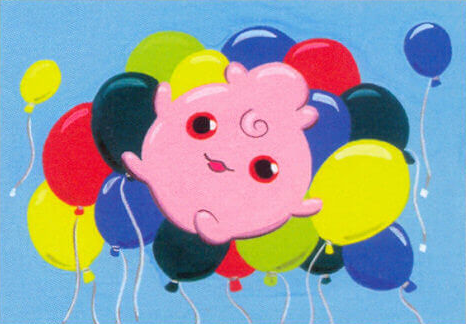 Format Staples - Part 8: Colorless Pokémon
Format Staples - Part 8: Colorless Pokémon